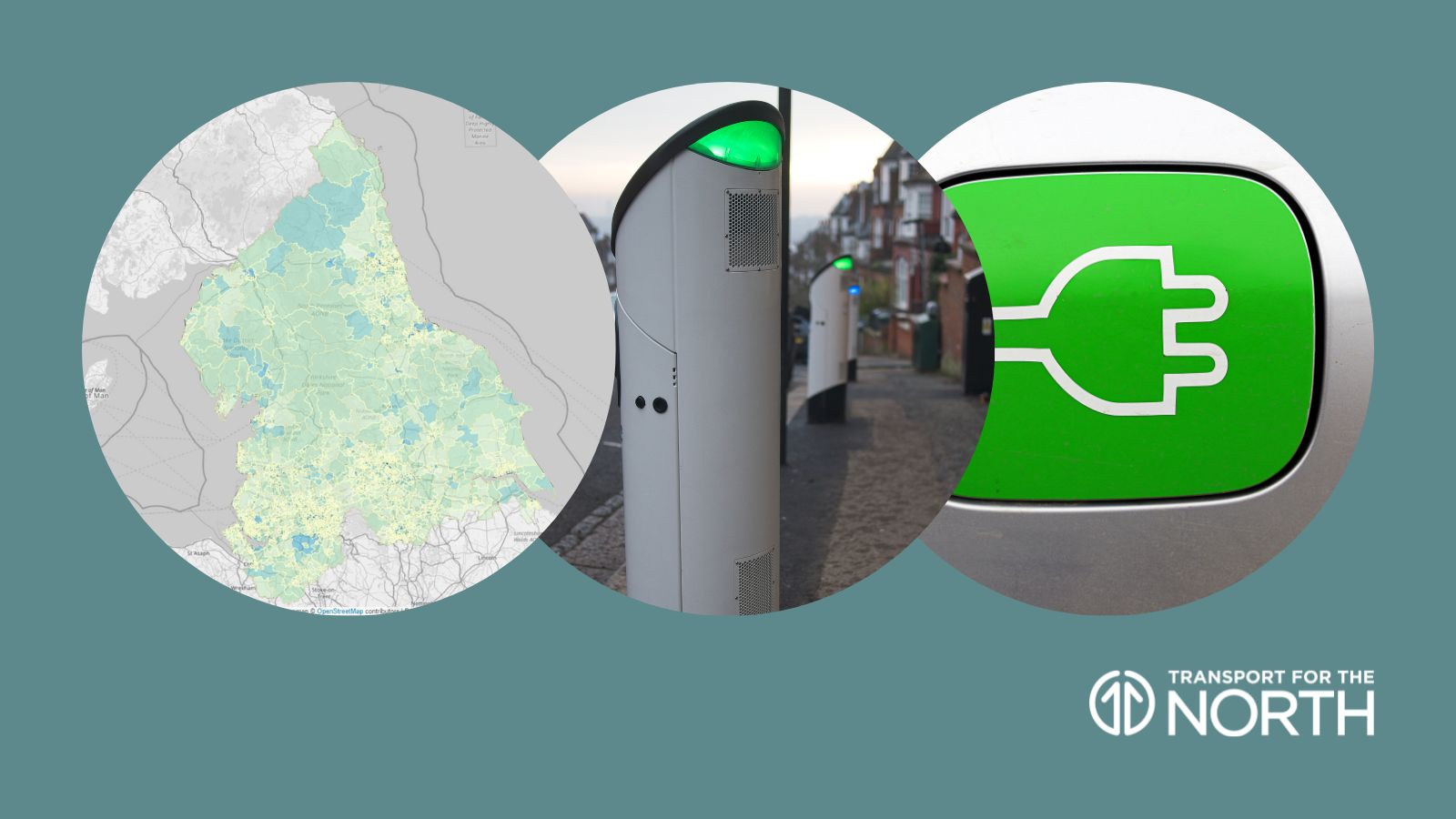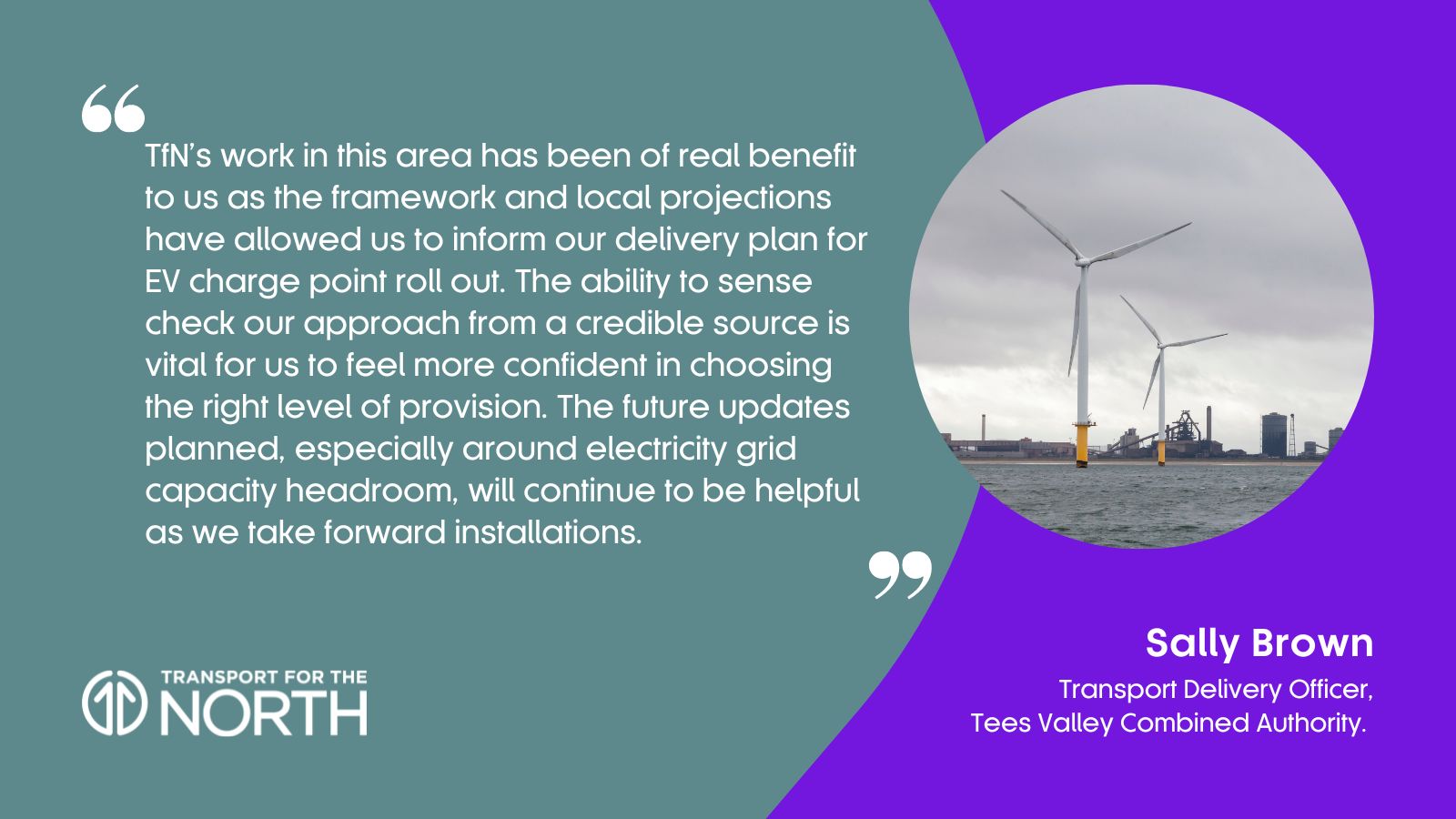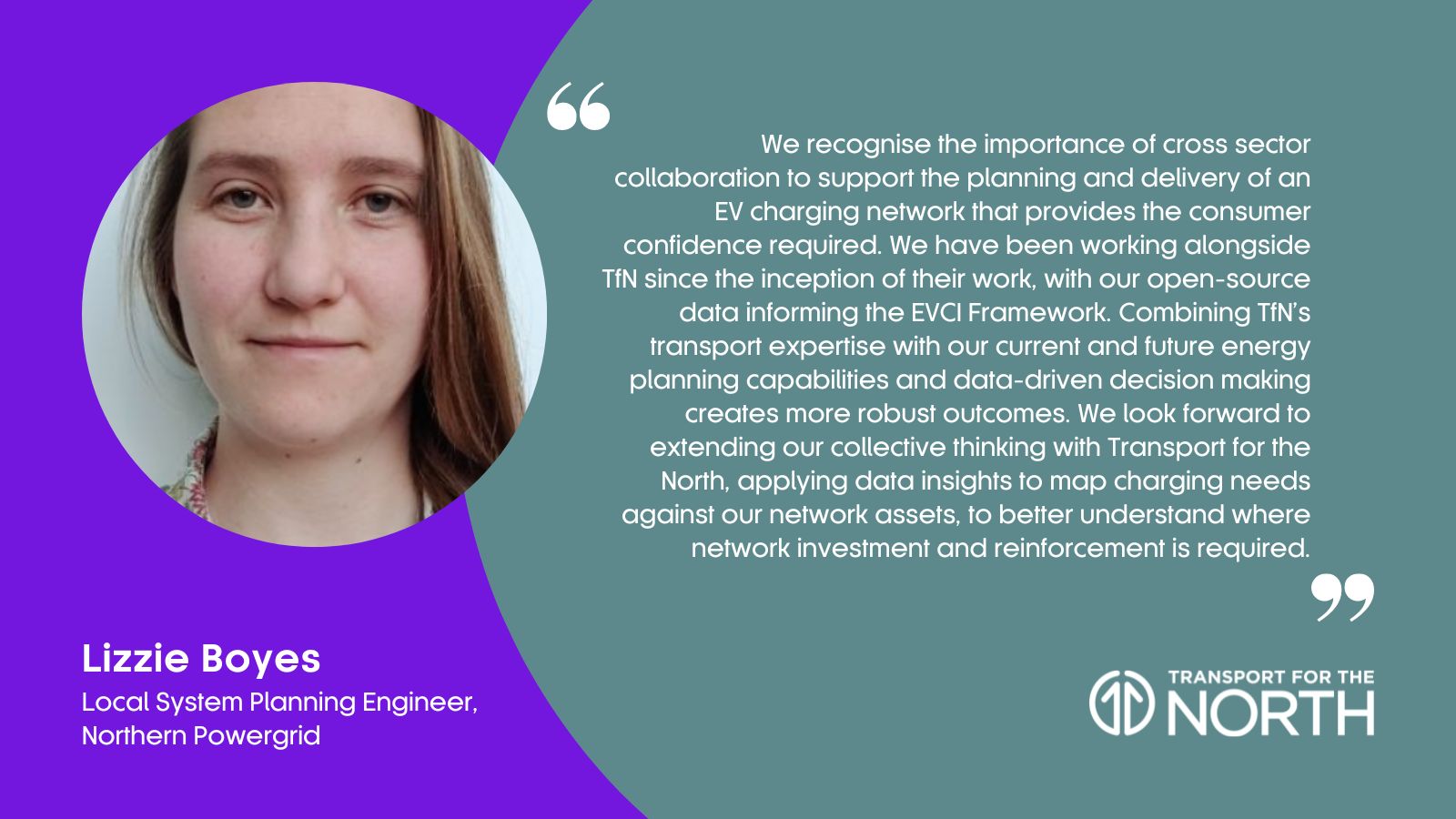Our Electric Vehicle Charging Infrastructure (EVCI) framework has proved a huge success with our partners. It has allowed us and them to research and plan charging point requirements as we continue the transition to electric vehicles. It was originally launched in autumn 2022, in recognition of the challenges faced with understanding the demand and supply of charge point infrastructure across our region.
Utilising Transport for the North’s (TfN) in-house expertise and innovative transport, decarbonisation and land-use datasets, the EVCI framework includes a openly accessible online visualiser, allowing five-year projections of EV charging related requirements through to 2050 to be viewed and downloaded.
Following the positive reaction to the initial roll out, TfN has continued to further develop the tool, with support from Environmental Resources Management (ERM) consultancy, and we are delighted to launch our latest updates. These enhancements include the capacity to monitor charge point delivery against forecasted need, mapping of rapid charger demand on our road networks and the impacts of Ultra Low Emission Vehicle (ULEV) price accessibility on charging demand.
In this article, we’ll run through the new capabilities which can be viewed or downloaded, and how they can support EV charging planning.
(please note: in order to view the latest updates, those that have used the tool in the last two weeks may have to clear their browsing data via their web browser settings)

To inform and evaluate delivery against future plans it is important to know where current infrastructure is located. The tool now pulls through national charge point register data to review against our forecasted charging requirements. This also provides functionality to add other deployment datasets in future, should TfN wish to.
This additional functionality forecasts EV car sales based on socioeconomic factors and ultra-low emission vehicle (ULEV) price accessibility, and the resulting EV charging requirements.
Highlighting areas which could ‘electrify’ faster or which are vulnerable to transport related social exclusion associated with decarbonisation of the vehicle fleet.
By applying TfN’s regional traffic model further, the user can now understand the likelihood of vehicles stopping across the North’s road network based on trip patterns across our region’s roads, journey length, vehicle range and battery size. This highlights the annual number of projected charging events and the resulting power required from our electricity networks to support demand. This can be reviewed against the monitoring enhancement above to understand progress made on rapid charging. The tool therefore now provides a clear understanding of the north’s rapid charging need across the whole road network, providing evidence on where investment in chargers is required, for example at Motorway Service Areas (MSAs) on the strategic road network, and on the wider network of major roads.
In addition to TfN’s Future Travel Scenarios providing regional projections for EV uptake, the DfT’s national EV uptake projections are now included within the tool. This should provide clarity during local, regional and national planning processes and is particularly useful as TfN’s tool is rolled out to other subnational transport bodies (STBs) across England.
To support net zero planning and delivery (i.e. Local Transport Planning and Local Area Energy Planning) the tool now provides the ability to view carbon emission reductions, examining savings between ‘tailpipe’ and EV-related grid emissions. The data comes from TfN’s decarbonisation modelling framework and calculates the likely transition of vehicles to EVs and the resulting reduction of emissions.
To improve processes behind the scenes, usability and quality of outputs, including a wider ability to download results and added glossary definitions and explanations.

TfN is fully aware the transition to EV over time is impacted by global and local pressures, as well as changing technology and charging behaviours.
However, despite such challenges, public charge point devices in the UK have recently passed 50,000, with around 7,000 of these in the TfN region.
Such updates and events highlight the need for a robust and reliant, yet flexible toolkit to continually sense check projections and inform planning and delivery. These updates will further enhance our partners’, particularly local authorities, ability to evidence and forward plan EV charging rollout in their areas.
Furthermore, the EV framework will serve to highlight opportunities for the private sector to support EV charging roll out in north, contributing to the investment needed to achieve the strategic outcomes in TfN’s Strategic Transport Plan.
Local authorities, in particular, have been using the tool’s projection capabilities to support their EV related policies and strategies. Most recent evidence of this is in usage to support their LEVI (local electric vehicle infrastructure) applications, with the region set to receive £109m of government funding to improve on-street charge point provision in local areas.

TfN’s work doesn’t stop here. We will continue to collaborate, learn from, and inform local, regional and national activities. Our regional EV partner meetings will continue, and a new set of toolkit enhancements are already in development, with a focus on boosting collaborations with energy and planning partners. We will also continue to roll the tool out to the rest of England (outside of London). Further updates will be provided on all these developments in Summer 2024.
Increasingly, delivery of transport outcomes are dependent upon investment in energy generation and distribution systems. Our tool currently projects that the additional power required for all types of EV chargers in the North by 2030 will be around 11,000 GWh per year, that’s the equivalent of around three million households’ annual usage.

We are confident our EV framework will continue to provide innovative evidence which shapes planning and delivery of EV charging, to ensure best delivery for all EV users. The vision for our work is to make the EV transition in the North of England more achievable and equitable, helping reach climate ambitions for future generations.
If you wish to find out more about TfN’s work in this area, please take a look at our website or contact us.